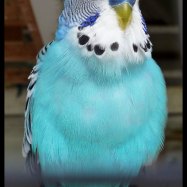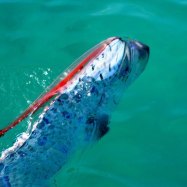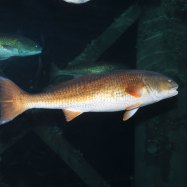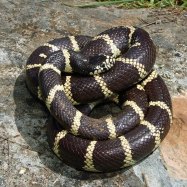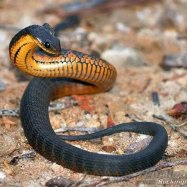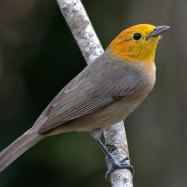
Green Rat Snake
Up to 2 meters (6.5 feet)
Meet the Green Rat Snake, a slender and elongated member of the Colubridae family. Found in forests and grasslands, it can reach up to 2 meters in length. With its green coloration, it blends perfectly into its natural habitat, making it a skilled hunter. Keep your eyes peeled and be amazed by this impressive creature! #GreenRatSnake #Colubridae #ForestHabitat
Animal Details Summary:
Common Name: Green Rat Snake
Kingdom: Animalia
Habitat: Tropical and subtropical forests
The Fascinating Green Rat Snake: A Jewel of Southeast Asia
Southeast Asia is a region known for its diverse array of wildlife. From elephants and orangutans to tigers and rhinos, this region boasts an incredible variety of species. Amidst the vast array of animals in Southeast Asia, there is one creature that stands out for its unique characteristics and striking appearance – the Green Rat Snake.Scientifically known as Gonyosoma oxycephalum, the Green Rat Snake is a reptile that belongs to the class Reptilia and the family Colubridae Green Rat Snake. It is commonly referred to as the Green Rat Snake due to its vibrant green coloration and its preference for eating rodents. This fascinating creature is a true jewel of the tropical and subtropical forests of Southeast Asia, particularly in its country of origin – Thailand.
The Green Rat Snake has captured the attention and interest of scientists and animal lovers alike, and it's not hard to see why. With its distinctive appearance and intriguing characteristics, this snake is truly a captivating species.
A Look at the Classification and Habitat
The Green Rat Snake falls under the kingdom Animalia and the phylum Chordata, which means it is a vertebrate animal with a spinal cord. It belongs to the order Squamata, which includes snakes and lizards, and the family Colubridae, which consists of non-venomous snakes.As mentioned earlier, the Green Rat Snake is native to Southeast Asia, particularly in Thailand. It can also be found in other countries in the region, such as Malaysia, Indonesia, and Myanmar. This species is fond of living in the dense forests and grasslands, making its home high in the trees Goliath Tigerfish. It is an arboreal creature, meaning it is adapted to living and moving in trees.
The Green Rat Snake is well-known for its adaptability to different environments. It can thrive in a broad range of habitats, from tropical rainforests to agricultural fields. However, it is most commonly found in the forested areas of Southeast Asia, where it can easily camouflage among the lush greenery.
A Carnivorous Hunter: Feeding and Hunting Habits
The Green Rat Snake is a carnivorous species, meaning it primarily feeds on other animals. As its name suggests, rodents make up the majority of its diet. It is an excellent hunter, and with its elongated, slender body, it can easily navigate through tight spaces and climb trees to catch its prey.This snake is also an ambush hunter, meaning it will wait patiently for its prey to come to it. Once its prey, such as rats, mice, and other small mammals, comes within striking distance, the Green Rat Snake will quickly attack and constrict its victim with its powerful body.
Another fascinating fact about the Green Rat Snake is that it has specialized teeth for catching its prey. Its upper jaw has sharp, inward-pointing teeth that prevent the prey from escaping, while the lower jaw has grooved teeth that aid in holding onto its prey while it is being swallowed.
Breathtaking Beauty: The Coloration and Physical Appearance
The Green Rat Snake is undoubtedly one of the most visually stunning snakes in Southeast Asia. Its striking coloration is what draws the most attention. As its name suggests, this snake has a bright green color, which serves as camouflage in the forest canopy. The shade of green may vary, from a lighter hue to a deep emerald, depending on its habitat and age.Apart from its vibrant green coloration, the Green Rat Snake also has a yellow or white belly, with black and white lines running down its body. This color combination is not only aesthetically pleasing but also serves as a warning to predators. When threatened, the snake can flatten its body, displaying its black and white patterns as a warning to predators that it is not to be messed with.
The Green Rat Snake can grow up to 2 meters (6.5 feet) in length, with males being slightly longer than females. It has a slender and elongated body, allowing it to move effortlessly through the trees. Its head is small and pointed, with large eyes that aid in detecting its prey. This snake is also known for its agile and swift movements, which make it an efficient predator.
A Look at the Lifespan and Behavior
The Green Rat Snake has a relatively long lifespan compared to other species of snakes. On average, it can live for 10-15 years in captivity, but can potentially live longer in the wild. In captivity, the Green Rat Snake can make a great pet, as it is generally docile and not aggressive towards humans. However, it is worth noting that it is still a wild animal and requires proper care and handling.In the wild, the Green Rat Snake can often be seen basking in the sun or resting on tree branches. It is an excellent climber and uses its body to wrap around branches and move around with ease. Unlike other snake species, the Green Rat Snake is diurnal, meaning it is active during the day and rests at night.
Another interesting behavior of this snake is its ability to flatten its body and sway back and forth in a mesmerizing manner. It is believed that this behavior is used to attract potential mates or intimidate predators.
Threats and Conservation
Like many other species in Southeast Asia, the Green Rat Snake is facing threats due to deforestation and habitat loss. As the region continues to be developed for agriculture and urbanization, the natural habitats of these snakes are being destroyed. This poses a significant risk to the survival of the species.However, the Green Rat Snake is not considered endangered at the moment, and its population is relatively stable. It is also protected under the Wildlife Preservation and Protection Act in Thailand, which prohibits its capture and trade. Additionally, efforts are being made to conserve its habitat and raise awareness about the importance of protecting these creatures.
In Conclusion
In a world full of dangerous and venomous snakes, the Green Rat Snake is a refreshing and awe-inspiring species. Its striking appearance, unique behaviors, and adaptability make it a truly remarkable creature. However, as human activities continue to impact its natural habitat, it is crucial to appreciate and conserve this beautiful snake before it becomes threatened or endangered.So, the next time you find yourself walking through the tropical forests of Southeast Asia, keep an eye out for the elusive Green Rat Snake. Who knows, you may be lucky enough to catch a glimpse of this jewel of the region.
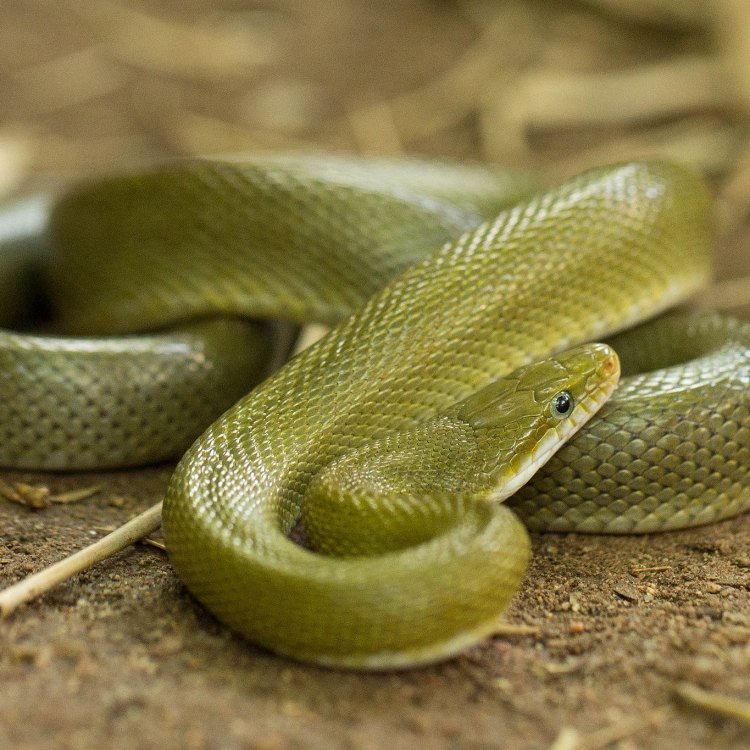
Green Rat Snake
Animal Details Green Rat Snake - Scientific Name: Gonyosoma oxycephalum
- Category: Animals G
- Scientific Name: Gonyosoma oxycephalum
- Common Name: Green Rat Snake
- Kingdom: Animalia
- Phylum: Chordata
- Class: Reptilia
- Order: Squamata
- Family: Colubridae
- Habitat: Tropical and subtropical forests
- Feeding Method: Carnivorous
- Geographical Distribution: Southeast Asia
- Country of Origin: Thailand
- Location: Forests and grasslands
- Animal Coloration: Green
- Body Shape: Slim and elongated
- Length: Up to 2 meters (6.5 feet)
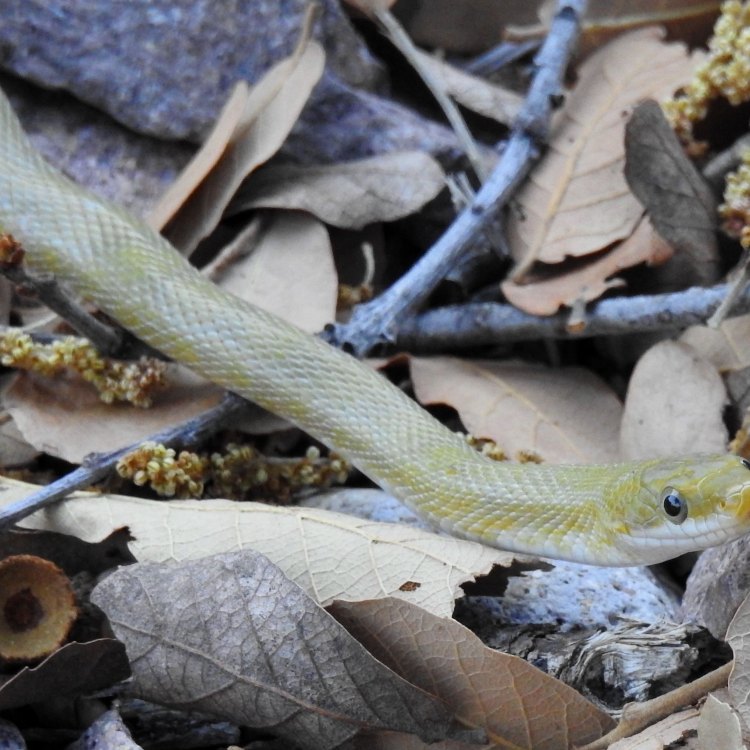
Green Rat Snake
- Adult Size: 1.5-2 meters (5-6.5 feet)
- Average Lifespan: 10-15 years
- Reproduction: Oviparous
- Reproductive Behavior: Males engage in combat during mating
- Sound or Call: Not well-studied but may produce hissing sounds
- Migration Pattern: Non-migratory
- Social Groups: Solitary
- Behavior: Predominantly arboreal and diurnal
- Threats: Habitat loss and illegal pet trade
- Conservation Status: Not evaluated
- Impact on Ecosystem: Maintains balance in ecosystems by controlling rodent populations
- Human Use: Popular in the pet trade
- Distinctive Features: Bright green coloration and large eyes
- Interesting Facts: 1. The Green Rat Snake is also known as the Oriental Rat Snake. 2. It is a non-venomous species. 3. They are excellent climbers and are often seen in trees. 4. Green Rat Snakes are proficient hunters of rodents. 5. They are capable swimmers and can move quickly in the water.
- Predator: Raptors, large snakes, and mammals
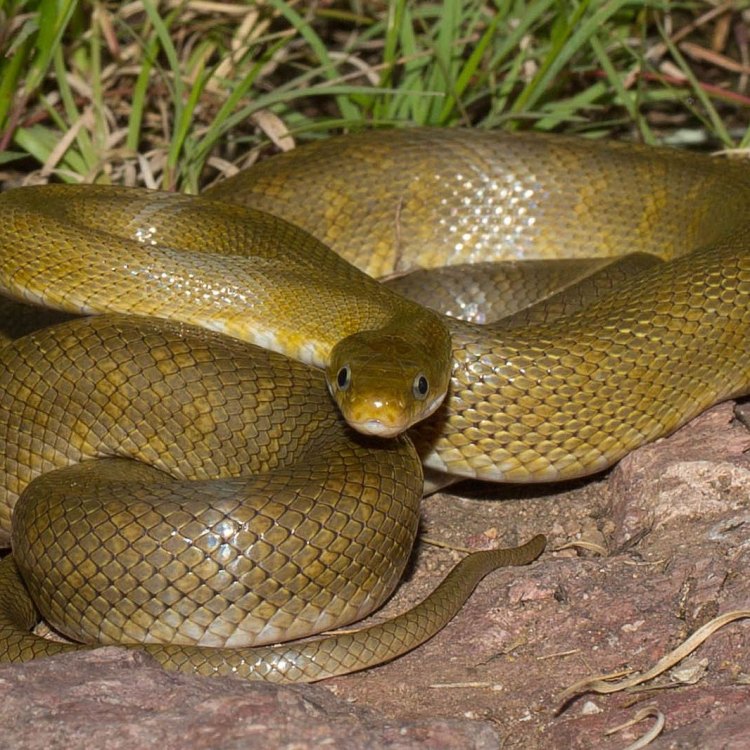
Gonyosoma oxycephalum
The Green Rat Snake: A Beautiful and Fascinating Creature of the Forest
Deep in the lush green forests of Asia, there lives a mysterious and mesmerizing creature known as the Green Rat Snake. This snake, scientifically known as Ptyas mucosus, is a non-venomous species and holds a prominent place in the ecosystem. With its striking bright green coloration and impressive size, this snake truly stands out among its counterparts. In this article, we will delve deep into the world of the Green Rat Snake and uncover its unique features, behavior, and impact on the ecosystem PeaceOfAnimals.Com.The Physical Characteristics of the Green Rat Snake
The Green Rat Snake is one of the largest non-venomous snake species, with an average length of 1.5-2 meters (5-6.5 feet). They possess a slender, elongated body with a long tail and smooth scales. Their body is covered in an attractive, shiny green color, with a yellowish belly. This green coloration allows them to blend seamlessly into their natural habitat, making them a skilled predator and a challenging creature to spot in the wild.One of the most striking physical features of the Green Rat Snake is its large eyes. This gives them excellent vision, which is essential for hunting. They rely primarily on their eyesight to detect prey and navigate through their surroundings Giant Schnauzer. These stunning creatures also have a sharp sense of smell, which aids them in hunting their prey.
An Average Lifespan of 10-15 years
The average lifespan of a Green Rat Snake is around 10-15 years, but this can vary depending on various factors, such as their habitat, diet, and environmental conditions. In captivity, these snakes can live up to 20 years with proper care and conditions.Oviparous Reproduction Pattern
Green Rat Snakes are oviparous, meaning they reproduce by laying eggs. During the breeding season, which occurs from March to May, females lay between 5-12 eggs in a safe and warm place. These eggs then hatch after approximately two months, and the hatchlings are independent from birth.Reproductive Behavior of Green Rat Snakes
During the breeding season, male Green Rat Snakes engage in combat with each other to compete for mating rights with the females. These fights can be intense and involve intertwining, pushing, and biting. The winner of the battle gets to mate with the female, and the unsuccessful males often retreat and search for other potential mates.The Sound of the Green Rat Snake
The Green Rat Snake is not well-studied when it comes to their vocalization. However, they are known to produce a hissing sound when threatened or agitated. This is a common defensive mechanism used by snakes to ward off potential predators.The Non-Migratory Nature of Green Rat Snakes
Green Rat Snakes are non-migratory creatures, meaning they do not undertake long-distance seasonal movements. They are found in different regions of Asia, including India, China, Japan, and the Indochinese Peninsula, throughout the year. They usually stay in a specific territory, but they may venture out in search of food or a potential mate.The Solitary Life of Green Rat Snakes
Green Rat Snakes are solitary creatures. They prefer living alone, except during the breeding season. They are mostly active during the day, and they spend their nights hiding in trees, rocks, or other suitable hiding places. However, during the peak of the summer season, when temperatures are high, they may become more active during the night to avoid the heat.The Behaviors of the Green Rat Snake
Green Rat Snakes are primarily arboreal, meaning they spend most of their time in trees. They are proficient climbers, thanks to their long, slender body, and powerful muscles. They use their excellent climbing skills to hunt their prey, avoid predators, and reach their preferred basking spots.These snakes are also diurnal, which means they are most active during the daytime. They prefer basking in the sun, which helps them regulate their body temperature. When they are not basking, they can be found hunting for prey or resting in the shade of trees.
The Threats to Green Rat Snakes
The Green Rat Snake faces various threats, with habitat loss and the illegal pet trade being the most significant. With rapid urbanization, deforestation, and human disturbance, their natural habitat is continually shrinking, leaving them with fewer places to call home. They are also sought after in the pet trade due to their unique appearance and docile nature. Unfortunately, this leads to a high demand for wild-caught Green Rat Snakes, and as a result, their population in the wild is declining.The Conservation Status of the Green Rat Snake
The Green Rat Snake is not currently evaluated on the IUCN Red List. However, due to a decline in their population and threats to their habitat, it is essential to monitor and conserve these fascinating creatures closely.The Impact of Green Rat Snakes on Ecosystems
Green Rat Snakes play a crucial role in maintaining a healthy ecosystem. These skilled hunters feed on rodents, which helps control their population, creating a balance in the ecosystem. Rodents are known to cause significant damage to crops and spread diseases, and the Green Rat Snake plays a vital role in keeping their population in check.Human Use of Green Rat Snakes
Green Rat Snakes are popular in the pet trade due to their attractive appearance and ease of care. However, it is important to note that they are wild animals and require specialized care and a suitable environment to thrive. Therefore, only experienced and responsible reptile owners should consider keeping them as pets. It is also essential to purchase from reputable breeders rather than supporting the illegal pet trade.Distinctive Features of the Green Rat Snake
The Green Rat Snake has many unique features that make it stand out in the animal kingdom. Its vibrant green coloration, large eyes, and impressive size all contribute to its distinctive appearance. Despite being non-venomous, its large size and striking appearance can still strike fear into the hearts of many.Interesting Facts About the Green Rat Snake
1. The Green Rat Snake is also known as the Oriental Rat Snake, and it is sometimes referred to as the Asian ratsnake.2. Green Rat Snakes are non-venomous but can still use their powerful jaws to deliver a painful bite if threatened.
3. These snakes are excellent swimmers and are often seen moving quickly in the water. This allows them to access new habitats and hunt for prey.
4. Green Rat Snakes are proficient hunters of rodents, but they also feed on birds, lizards, and small mammals.
5. Raptors, large snakes, and mammals are the primary predators of Green Rat Snakes.
In conclusion, the Green Rat Snake is a beautiful and fascinating creature of the forest. Its bright green coloration, impressive size, and unique features make it one of the most striking snake species in the world. They play a vital role in the ecosystem by controlling rodent populations and maintaining balance. However, they face various threats, and it is crucial to conserve and protect these magnificent creatures to ensure their survival for future generations to enjoy.
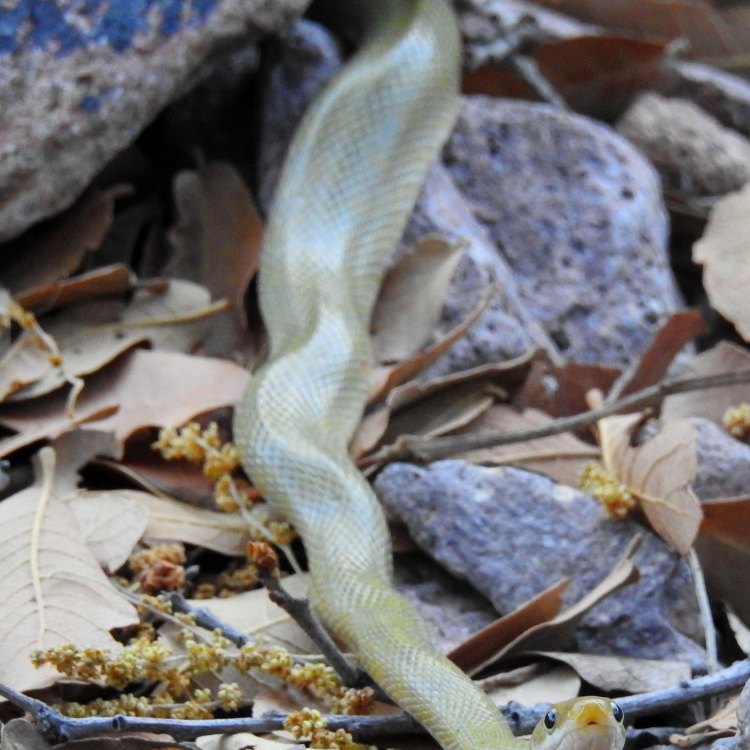
The Fascinating Green Rat Snake: A Jewel of Southeast Asia
Disclaimer: The content provided is for informational purposes only. We cannot guarantee the accuracy of the information on this page 100%. All information provided here may change without prior notice.

